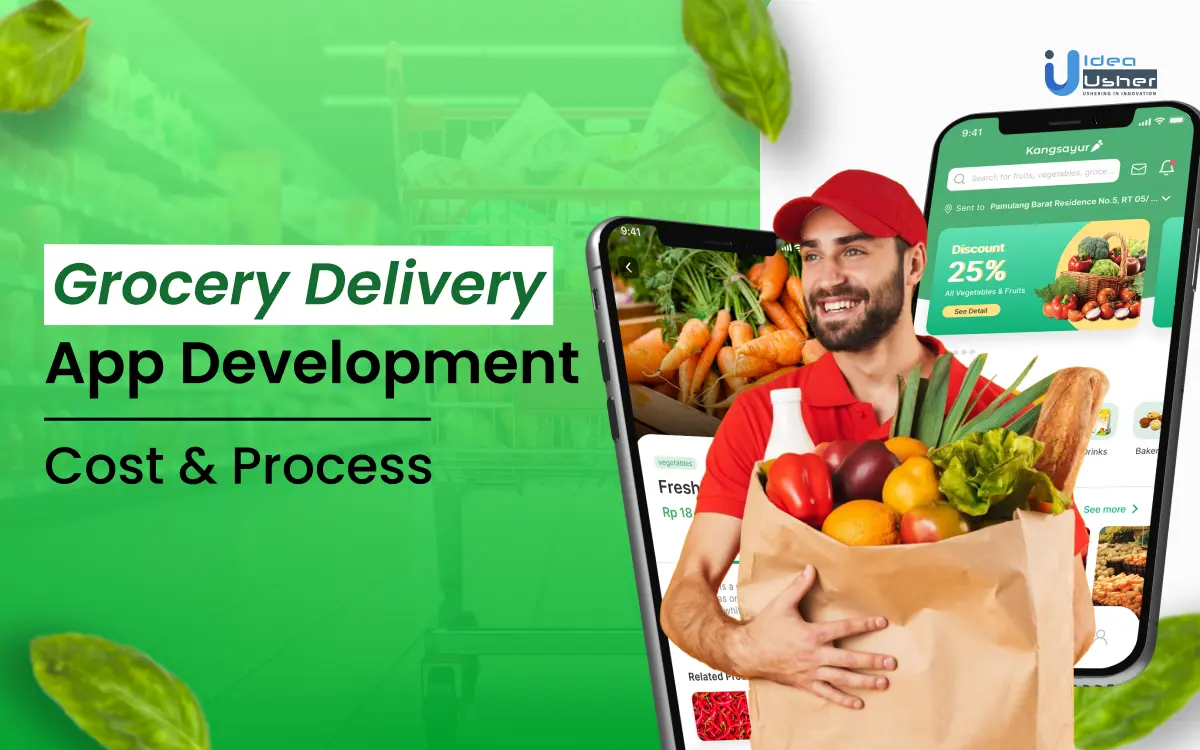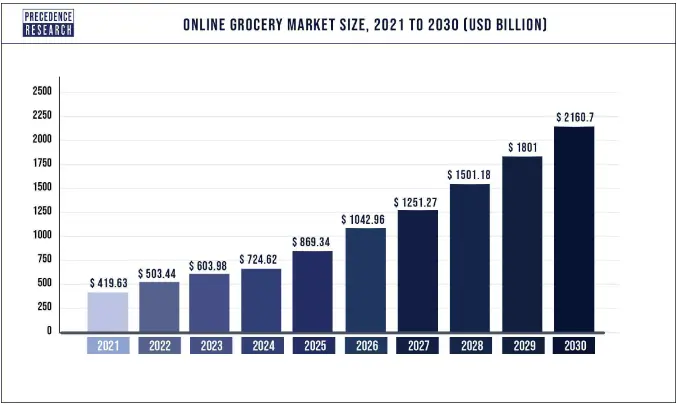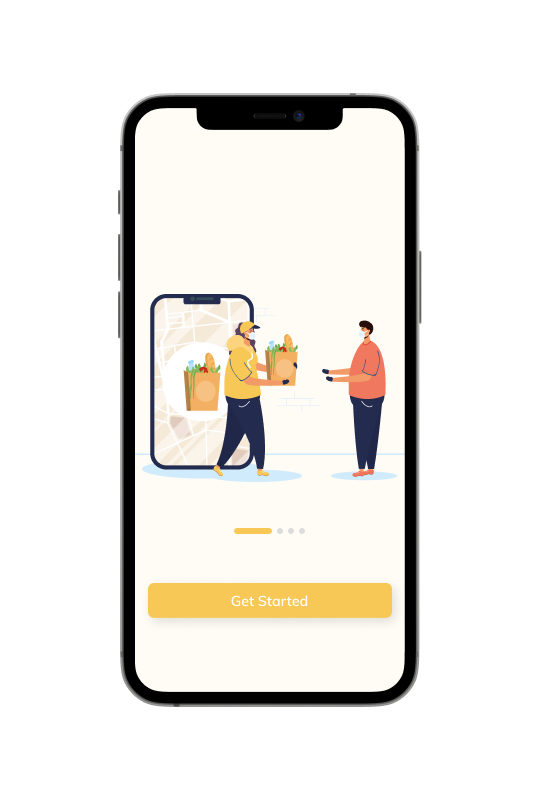
The concept of grocery delivery service has a long history, once reserved for the privileged few, but now accessible to anyone with a smartphone, thanks to the internet and mobile technology.

Source: Precedence Research
This transformation in the eCommerce market is projected to accelerate in the future decades, owing mostly to the growth of grocery delivery applications.
Many grocery shop owners are considering developing online platforms for food delivery services, seeing it as a profitable step for their company.
In this article, explore the factors influencing the budget, the essential steps for initiating grocery delivery app development, and must have app features.
- What Is A Grocery Delivery App?
- Why Develop A Grocery Delivery App?
- Must-Have Features In A Grocery Delivery App
- How To Develop A Grocery Delivery App?
- Cost Affecting Factors To Consider To Develop A Grocery Delivery App
- Revenue Models For Grocery Delivery App
- Top 5 Grocery Delivery Apps In The Market Right Now
- Tech Stack To Consider To Develop A Grocery Delivery App
- Conclusion
- How Idea Usher Can Help Develop Your Grocery Delivery App?
- FAQ
What Is A Grocery Delivery App?
A grocery delivery app is an innovative digital platform designed to streamline the process of purchasing groceries for users. It enables customers to order essential items such as food, household goods, and personal care products from the comfort of their homes or on the go. The grocery app falls under the given categories
I. Aggregators:
Aggregator-type grocery delivery apps serve as a centralized hub where users can explore and select from a variety of nearby grocery stores. These apps typically feature well-known chains such as Walmart and other local retailers. The operational process of aggregators involves:
- Presenting users with a curated list of available stores within their vicinity.
- Allowing users to browse through the digital inventory of these stores and add desired items to their virtual shopping cart.
- Facilitating secure online transactions as users proceed to checkout.
- Providing real-time order tracking capabilities until the delivery is completed.
- Leveraging partnerships with store owners and startups for efficient order fulfillment and doorstep delivery.
Aggregator apps offer convenience and choice by bringing multiple grocery options onto a single platform, catering to diverse consumer preferences and needs.
II. Marketplaces
Marketplace-style grocery delivery apps operate similarly to aggregators but emphasize a different mode of functionality. In marketplace apps, the platform acts as an intermediary connecting buyers with nearby merchants. The key features include:
- Recommending merchants based on the user’s location, preferences, and past purchase history.
- Offering a seamless interface for users to explore products from various merchants and place orders effortlessly.
- Fostering communication and transactions between buyers and sellers through the app’s secure platform.
- Providing a platform for merchants to showcase their offerings, expand their customer base, and manage orders efficiently.
- Promoting a dynamic ecosystem where users can discover new vendors and enjoy a personalized shopping experience tailored to their needs.
Marketplace apps empower both consumers and merchants by facilitating transactions, fostering community engagement, and driving economic growth within the local market.
Why Develop A Grocery Delivery App?
The grocery delivery market has seen significant growth over the years. Grocery delivery apps have expanded from takeaways to anything and everything, adding billions of dollars in potential revenue capture. Here are stats indicating why it is a great time to invest in Grocery delivery app development:
- The revenue of online food delivery platforms is anticipated to increase by approximately 13% annually from 2023 to 2027, aiming for a market volume of US$1.65 trillion by 2027.
- Predictions suggest that the Average Revenue Per User (ARPU) for online grocery deliveries in the US will hit $1,360 in 2023, contrasting with figures of $487 in China, $448 in Europe, and $449 globally.
- Projections indicate that Ghost kitchens, also known as cloud kitchens, dark kitchens, or virtual kitchens, are poised to achieve a valuation of $1 trillion by the year 2030.
- The autonomous last-mile delivery sector is experiencing rapid growth, with estimates showing an increase from $8.78 billion in 2020 to $51 billion by 2028.
- The revenue generated by the meal kit delivery business is forecasted to reach $25 billion by 2027.
Must-Have Features In A Grocery Delivery App
In the era of instant gratification, grocery delivery apps have become ubiquitous, offering convenience and time-saving solutions. Explore the essential features that distinguish exceptional grocery delivery apps, ensuring a seamless user experience and fostering customer loyalty.
I. Customer App
The Customers application allows customers to explore product catalogs, place orders, pay for them, and have them delivered. Here are some key components to include in such an app.
1. Social Signup/Login
Allowing users to sign up or log in via social media accounts or email/phone simplifies the onboarding process, enhancing user experience. This feature reduces friction during registration, leveraging existing credentials from popular platforms like Facebook, Google, or Apple, ensuring swift access to the app’s services.
2. User Profile
A dedicated space where users can manage personal details and preferences, facilitating seamless transactions and deliveries. Within the user profile, individuals can update contact information, delivery addresses, and payment methods, ensuring accurate and efficient order processing. Customizable preferences enhance personalization, catering to individual needs and preferences.
3. Product Catalog
An extensive list of available products categorized for easy navigation, ensuring users can quickly find what they need. With clear categories, filters, and sorting options, users can efficiently browse through a wide range of products, from groceries to household essentials, enhancing the overall shopping experience and satisfaction.
4. Order Editing & Cancellation
Flexibility for users to modify or cancel orders reflects customer-centric service, accommodating changing needs or circumstances. This feature empowers users to make adjustments to their orders, such as adding or removing items, updating quantities, or cancelling entirely, providing convenience and peace of mind.
5. In-App Payments
Secure and convenient payment options integrated directly into the app streamline transactions, promoting frictionless shopping experiences. By supporting various payment methods, including credit/debit cards, digital wallets, and even buy now, pay later services, users can complete transactions seamlessly without leaving the app, ensuring a smooth checkout process.
6. Advanced Search
A robust search function with typo tolerance and auto-complete capabilities enhances user efficiency in finding specific items. With predictive search suggestions and intelligent typo correction, users can quickly locate desired products, even if they misspell or mistype keywords, improving search accuracy and user satisfaction.
7. Add to Cart
Enables users to compile their desired items for purchase, mimicking traditional shopping experiences in a digital environment. The “Add to Cart” feature allows users to gather products they intend to buy before proceeding to checkout, facilitating organized and efficient shopping experiences while also supporting impulse purchases.
8. Nearby Stores
Integration with location services empowers users to explore and compare offerings from nearby grocery stores, aiding informed decision-making. By displaying nearby stores, along with their product availability, pricing, and promotions, users can make informed choices based on proximity and convenience, enhancing their overall shopping experience.
9. Order History
Accessible records of past orders provide users with insights into their purchasing habits and facilitate reordering of frequently bought items. Users can review their previous purchases, track spending patterns, and easily repurchase items they regularly use, promoting convenience and efficiency in shopping.
10. Order Status & Notifications
Real-time updates on order status and relevant notifications keep users informed and engaged throughout the purchasing and delivery process. From order confirmation to shipment tracking and delivery notifications, timely updates provide transparency and peace of mind, ensuring users are aware of the progress of their orders and any relevant updates or changes.
II. Admin Panel
The admin panel serves as the backbone of any delivery application, offering a range of essential features to streamline operations and enhance user experience.
1. Super Admin
The super admin, as the primary administrator, possesses the authority to create and manage accounts for other administrators within the application, ensuring a hierarchical and organized management structure conducive to efficient operations and accountability.
2. Order Management
The comprehensive order management system empowers administrators to efficiently track, process, and fulfill orders, with advanced features such as order status updates, delivery tracking, and customer notifications, ensuring seamless order processing and customer satisfaction.
3. Stores Management
Administrators wield powerful tools to curate and manage the selection of stores available on the platform, with features for store verification, performance monitoring, and contract management, ensuring a diverse and high-quality vendor ecosystem that meets the needs of users.
4. Product Management
Administrators enjoy robust product management capabilities, including bulk product import/export, attribute customization, inventory tracking, and SKU management, enabling precise control over the product catalog to ensure accuracy, relevance, and availability.
5. Customer Management
The customer management module provides administrators with comprehensive tools for managing customer profiles, preferences, and interactions, including features for customer segmentation, communication tracking, and support ticket management, fostering personalized and responsive customer service.
6. Transaction History
Detailed transaction logs offer administrators comprehensive insights into financial performance, transaction trends, and user behavior, with features for transaction filtering, export, and reconciliation, providing valuable data for financial reporting, auditing, and strategic decision-making.
7. Content Management
Administrators can effortlessly manage product information, including images, descriptions, videos, and user-generated content, with features for content moderation, version control, and multilingual support, ensuring accurate, compelling, and culturally relevant content that resonates with users.
8. Reports & Analytics
Advanced reporting and analytics tools empower administrators to generate custom reports, visualize data trends, and derive actionable insights into key performance metrics such as sales, revenue, conversion rates, and user engagement, enabling informed decision-making and continuous optimization of business strategies.
9. Loyalty Programs
Administrators have the flexibility to design, launch, and manage loyalty programs tailored to their business objectives, with features for points accrual, rewards redemption, tier-based benefits, and campaign tracking, fostering customer loyalty, retention, and advocacy while driving incremental sales and revenue growth.
III. Driver App
Delivery applications may have different features depending on your business model. Let’s take a look at some of the features you might consider adding to your grocery delivery app development.
1. Profile Creation
Drivers can establish detailed profiles post-registration, providing essential personal and vehicle information for comprehensive identity verification and enhanced customer trust. This feature ensures seamless communication channels and fosters a sense of professionalism within the delivery network, promoting long-term reliability and customer satisfaction.
2. Availability Management
The availability management feature offers drivers unparalleled control over their work schedules, allowing them to finely tune their availability settings based on their preferences and commitments. By specifying their working hours or days and easily toggling between online and offline modes, drivers can optimize their earning potential while accommodating personal obligations, promoting a healthy work-life balance.
3. Delivery Notifications
With instant push notifications, drivers stay constantly informed about order updates, ensuring prompt response to new orders and any modifications therein. This proactive approach minimizes delays and keeps drivers well-informed throughout the delivery process, contributing to enhanced efficiency, customer satisfaction, and overall service quality.
4. Order Handling
Efficient order handling capabilities empower drivers to efficiently manage their workload by swiftly accepting or declining incoming orders. This functionality enables drivers to prioritize tasks based on various factors such as proximity, order volume, and time constraints, ensuring optimal resource allocation and timely delivery service.
5. Delivery Details Access
Comprehensive access to order details equips drivers with essential information such as delivery locations, scheduled timings, and customer contact details. This holistic view enables drivers to plan their routes effectively, anticipate potential challenges, and provide accurate updates to customers, fostering transparency and trust throughout the delivery journey.
6. Payment Tracking
The robust payment tracking feature enables drivers to effortlessly monitor and manage their earnings directly within the app. By providing detailed insights into payment history, including transaction summaries and payout schedules, drivers can confidently track their financial performance, reconcile discrepancies, and make informed decisions regarding their delivery activities.
7. In-App Navigation
Seamless integration of in-app navigation tools facilitates hassle-free order delivery by providing real-time directions and route optimization features. This intuitive functionality minimizes reliance on external navigation apps, streamlines the delivery process, and enhances overall operational efficiency, allowing drivers to focus on delivering exceptional service to customers while maximizing their earning potential.
IV. Grocery Store App
If you pick the aggregator platform business model, you must incorporate the establishment of a grocery shop app in your grocery delivery app development plan.
1. Profile Creation
Grocery store owners will have the ability to set up comprehensive profiles within the app, furnishing essential details such as contact information, physical address, and a comprehensive list of products available for purchase along with corresponding prices. This feature facilitates seamless communication between store owners and customers, enhancing accessibility and promoting transparency in transactions.
2. Product Catalog Management
The app empowers grocery stores to efficiently manage their product catalogs, allowing for the addition of new items, updating prices, uploading high-quality images, and providing detailed descriptions. This feature ensures that customers have access to accurate and up-to-date information, enhancing their shopping experience and fostering trust in the platform.
3. Driver Tracking
Grocery stores can track the real-time location of delivery drivers, enabling them to optimize delivery routes, estimate accurate delivery times, and enhance overall logistics management. This feature provides store owners with valuable insights into the movement of their delivery fleet, facilitating proactive decision-making and improving the efficiency of order fulfillment processes.
4. Offers & Discounts Management
Store owners can create and customize a variety of promotional offers and discounts to attract customers and boost sales. This feature enables grocery stores to implement targeted marketing strategies, reward customer loyalty, and stay competitive in the marketplace. By offering special deals and incentives, store owners can drive customer engagement and increase conversion rates, ultimately driving business growth.
5. Orders Management
The app provides store employees with a comprehensive overview of all incoming orders, including their status and relevant details such as delivery times and customer preferences. This feature streamlines order processing, minimizes errors, and ensures timely fulfillment, enhancing customer satisfaction and loyalty. Store staff can efficiently manage ongoing, dispatched, scheduled, and ready-for-pickup orders, optimizing operational efficiency and facilitating seamless order flow.
6. Push Notifications
Store owners receive real-time push notifications regarding new orders, order status updates, payment confirmations, and other important notifications related to order processing and delivery. This feature keeps store owners informed and empowered to take timely action, ensuring smooth order management and enhancing communication with customers. By staying informed about order-related activities, store owners can provide proactive customer support and maintain high service standards.
7. Payment History
The app maintains a comprehensive record of all payments received through the platform, providing store owners with transparent insights into their financial transactions. This feature enables store owners to track revenue streams, reconcile accounts, and generate financial reports effortlessly. By accessing detailed payment history data, store owners can make informed decisions regarding pricing strategies, inventory management, and business expansion initiatives, driving long-term profitability and success.
How To Develop A Grocery Delivery App?
Developing a grocery delivery app involves a comprehensive process that encompasses market research, conceptualization, technological choices, development, testing, deployment, and ongoing support. Explore each step in detail
1. Market Research and Planning
Conducting thorough market research is essential for understanding user preferences, competition, and market trends. By analyzing data, you can identify your target audience and their needs. This information helps in crafting a comprehensive business plan, outlining key features, revenue streams, and marketing strategies tailored to your target market.
2. Conceptualization and Wireframing
Defining the core features of your grocery delivery app is crucial for its success. Through wireframing and mockups, you can visually represent the app’s layout, user interface, and navigation flow. Iterating on the design based on user feedback and usability testing ensures that the final product meets user expectations and provides an optimal user experience.
3. Choose the Right Technology Stack
Selecting the appropriate technology stack is fundamental to the development process. This includes choosing frontend frameworks like React Native or Flutter, backend technologies such as Node.js or Django, and reliable databases and hosting services. Making informed choices based on scalability, security, and compatibility ensures the app’s stability and performance.
4. Backend Development
Developing robust server-side logic is essential for handling user authentication, managing product catalogs, processing orders, and integrating payment gateways. Implementing APIs for communication between the frontend and backend components ensures seamless interaction and data exchange, enhancing the overall functionality of the app.
5. Frontend Development
Building intuitive and responsive user interfaces is key to engaging users and providing a seamless shopping experience. Implementing features like product search, filtering, and sorting options enhances usability and convenience. Adhering to design guidelines and platform-specific requirements ensures consistency and compatibility across different devices and operating systems.
6. Integration of Third-party Services
Integrating third-party services for functionalities like payment processing, location tracking, and push notifications enhances the app’s capabilities and user experience. Leveraging established services such as Stripe for payments and Google Maps API for location tracking ensures reliability, security, and scalability.
7. Testing
Thorough testing is essential to identify and rectify any bugs or usability issues before the app’s launch. Conducting unit tests, integration tests, and user acceptance tests helps ensure the app functions correctly across various devices and scenarios. Addressing any issues promptly improves the app’s stability and user satisfaction.
8. Security and Compliance
Implementing robust security measures to protect user data and transactions is paramount. This includes encryption, secure authentication methods, and compliance with data protection regulations such as GDPR or CCPA. Ensuring the app’s security and compliance instills trust and confidence among users, fostering long-term relationships.
9. Deployment and Launch
Deploying the app to app stores following their guidelines and submission requirements is the final step before launch. Planning a marketing campaign to promote the app’s launch and attract users is crucial for its success. A well-executed launch strategy increases visibility and drives user acquisition.
10. Post-launch Support and Maintenance
Providing ongoing support and maintenance ensures the app remains functional and up-to-date. Monitoring app performance and user feedback allows for continuous improvement and optimization. Releasing regular updates with new features, bug fixes, and performance enhancements demonstrates commitment to user satisfaction and app quality.
11. Scaling and Expansion
Continuously evaluating user feedback and market trends informs decisions regarding new features and expansion opportunities. Scaling infrastructure and resources to accommodate growing user demand ensures smooth app operation and scalability. Adapting to evolving market dynamics and user needs is key to sustaining growth and competitiveness in the long run.
Cost Affecting Factors To Consider To Develop A Grocery Delivery App
Developing a grocery delivery app requires careful consideration of various factors that can significantly impact both the development process and the overall costs involved. In this section, we will explore into the key cost-affecting factors that businesses need to consider when developing a grocery delivery app.
1. Technology Stack
Choosing the right technology stack is crucial for the success of a grocery delivery app, as it directly impacts development costs and scalability. The decision between native or cross-platform development, along with backend frameworks like Node.js or Django, requires careful consideration of factors such as development complexity, maintenance overhead, and scalability implications. Additionally, selecting scalable databases such as MongoDB or PostgreSQL is essential for accommodating future growth and ensuring optimal performance.
2. Features and Complexity
The features and complexity of a grocery delivery app significantly impact development costs and ongoing maintenance. Advanced functionalities like AI-powered recommendations, real-time inventory tracking, or integration with IoT devices enhance user experience but require extensive planning, development time, and ongoing maintenance. Maintenance overhead, data management complexity, and investment in user feedback loops contribute to long-term costs, making it essential to prioritize features based on user needs and business objectives.
3. UI/UX Design
Creating an engaging and user-friendly interface is paramount for the success of a grocery delivery app but entails design-related costs. Device fragmentation, branding and visual identity, and accessibility compliance are key factors that influence design expenses. Designing for multiple devices with varying screen sizes and resolutions necessitates responsive design principles and adaptive layouts, adding to design complexity and testing efforts. Investing in a distinctive brand identity and ensuring accessibility for users with disabilities require additional design resources but can enhance user engagement and brand recognition in the long run
4. Geographical Scope
Adapting the grocery delivery app to different regions involves localization efforts that affect development costs and market relevance. Beyond language translations, cultural adaptation, market research expenses, and legal and regulatory compliance are key factors to consider. Cultural preferences, consumer behaviors, and competitor landscapes vary across regions, necessitating thorough research and design iterations to ensure the app’s relevance and competitiveness.
5. Security and Compliance
Ensuring the security and compliance of a grocery delivery app is paramount to protect user data and maintain trust. Data privacy regulations, penetration testing, and incident response preparedness are critical considerations that impact development costs and ongoing maintenance. Adhering to evolving data privacy regulations such as GDPR, CCPA, or HIPAA requires continuous compliance efforts, audits, and updates to safeguard user data. Conducting regular security assessments and penetration testing to identify vulnerabilities and mitigate potential threats adds to development expenses but is essential for maintaining a secure environment.
Revenue Models For Grocery Delivery App
In today’s fast-paced world, grocery delivery apps have become a game-changer. They offer convenience, accessibility, and time-saving solutions for busy consumers. In this section explore the key revenue models that fuel the success of grocery delivery platforms.
1. Upcharging for items
Upcharging for items involves setting prices higher than the actual market value for certain products within the grocery delivery app. This strategy allows the platform owner to generate additional revenue by capitalizing on the convenience factor offered to customers. By presenting a slightly inflated price, the platform can cover operational costs and earn a margin on each transaction. For example, the app may list a carton of eggs for $3.50, while the actual in-store price is $3.00.
2. Delivery charges
Delivery charges represent an essential revenue stream for grocery delivery apps, enabling them to cover the expenses associated with logistics and transportation. While some apps may offer free delivery to users located nearby, fees are typically applied to compensate for the convenience and service provided. Fee structures may vary based on factors such as distance, order size, and promotional offers. For instance, customers may incur a $5 delivery fee for orders under $50, with free delivery offered for orders exceeding $100.
3. Commission from orders
Generating revenue through commissions involves establishing mutually beneficial partnerships with grocery stores, incentivizing them to join the platform and fulfill orders through the app. Platform owners can negotiate a commission from grocery store owners for each order facilitated through the app. By taking a percentage of each transaction, the platform can align its interests with those of participating merchants while monetizing the volume of orders processed. This model incentivizes the platform to drive sales and provide value-added services to both customers and vendors.
4. Premium Advertising Services
Premium advertising services present an avenue for grocery delivery apps to generate supplementary revenue by leveraging their platform’s reach and user engagement. The app can offer premium advertising space to highlight specific grocery stores, charging a premium for enhanced visibility. By offering prime advertising real estate to partner stores, the app can create additional value for merchants seeking to increase their visibility and attract customers. This revenue stream complements the core delivery service, allowing the platform to diversify its income sources while fostering mutually beneficial relationships with advertisers.
5. 3rd party ad services
Integrating third-party advertisement services enables grocery delivery apps to monetize their user base and app traffic by providing advertising opportunities to external entities. Grocery delivery apps can collaborate with third-party advertisement services to display targeted ads within the app interface. By leveraging demographic and behavioral data, the app can deliver personalized ad experiences to users, maximizing engagement and ad revenue potential. This revenue model expands the app’s monetization avenues beyond direct transactions, tapping into the broader digital advertising ecosystem for incremental income streams.
Top 5 Grocery Delivery Apps In The Market Right Now
With the rise of technology, numerous grocery delivery apps have emerged, offering a wide array of products and services tailored to meet the diverse needs of consumers. These apps provide a seamless shopping experience, allowing users to order everything from fresh produce to household essentials with just a few taps on their smartphones.
1. Instacart
Instacart has gained popularity for its wide coverage and flexibility. Users can shop from a variety of local grocery stores and specialty shops through the app. They offer features such as scheduled deliveries, in-app communication with shoppers, and the ability to reorder favorite items easily. Instacart also provides options for contactless delivery and pickup, ensuring convenience and safety for users, especially during the COVID-19 pandemic.
Instacart offers a diverse range of products, including fresh produce, dairy, meat, pantry staples, household essentials, and even alcohol in some areas. The app provides real-time updates on order status, substitutions, and delivery windows, allowing users to track their groceries every step of the way.
2. Amazon Fresh
Amazon Fresh is a part of Amazon’s ecosystem, catering to Prime members seeking convenience and a wide selection of groceries. Here are some additional details about the service: Amazon Fresh offers an extensive assortment of products, including fresh produce, meat, seafood, dairy, frozen foods, pantry items, and household essentials. Prime members can enjoy additional benefits such as exclusive deals, discounts, and special promotions on select items. Integration with other Amazon services allows users to easily add groceries to their shopping cart while browsing other products on the Amazon website or app.
3. Walmart Grocery
Walmart Grocery has emerged as a convenient option for customers who prefer the affordability and familiarity of Walmart’s product offerings. Here are more details about the service: The platform provides access to a wide range of products available at Walmart stores, including groceries, household essentials, personal care items, and more. Users can easily navigate the app or website to find products, filter by category, brand, price, and dietary preferences, making it easy to shop for specific items. The service offers both pickup and delivery options, allowing customers to choose the most convenient fulfillment method for their needs. Walmart’s everyday low prices and Rollback discounts are available through the grocery service, helping customers save money on their purchases.
3. Shipt
Shipt offers same-day delivery of groceries, household essentials, and other products from various retailers, including Target, Costco, CVS Pharmacy, and more, depending on the user’s location. The app provides a user-friendly interface with intuitive navigation, allowing customers to easily browse products, add items to their cart, and place orders. Shipt’s network of personal shoppers ensures that orders are picked, packed, and delivered with care and attention to detail. Customers can communicate with their shopper in real-time through the app, allowing for any necessary substitutions or adjustments to be made quickly and efficiently.
4. FreshDirect
FreshDirect offers a wide selection of fresh produce, meats, seafood, dairy, bakery items, prepared meals, and pantry staples sourced from local suppliers and trusted brands. The service prioritizes quality and freshness, with stringent standards for product selection, handling, and delivery. FreshDirect’s website and app feature easy-to-use search and navigation tools, allowing customers to find products, browse departments, and discover new items effortlessly. The company emphasizes sustainability and environmental responsibility by implementing eco-friendly packaging solutions and reducing food waste. FreshDirect offers convenient delivery options, including same-day and next-day delivery windows, allowing customers to receive their groceries when it’s most convenient for them.
5. Peapod
Peapod is an online grocery delivery service that operates in several major metropolitan areas in the United States. Customers can shop for groceries, fresh produce, meat, seafood, and household essentials through the Peapod website or app. Peapod offers convenient delivery options, including same-day and next-day delivery, with the ability to schedule delivery windows. The service also provides personalized recommendations based on past purchases and offers exclusive deals and discounts for customers.
Tech Stack To Consider To Develop A Grocery Delivery App
Developing a grocery delivery app involves various technologies across different components such as frontend, backend, database, and infrastructure. Here’s a comprehensive tech stack to consider:
1. Frontend Development
- Programming Languages: JavaScript (or TypeScript)
- Frameworks/Libraries: React Native (for cross-platform mobile app development), or native development for iOS (Swift) and Android (Kotlin/Java)
- UI Frameworks/Libraries: React.js, Vue.js, or Angular for web applications
- Styling: CSS preprocessors like Sass or Less, or CSS-in-JS solutions like styled-components
2. Backend Development
- Programming Languages: Node.js, Python (Django, Flask), Ruby (Ruby on Rails), Java (Spring Boot), or Go
- API: RESTful or GraphQL for building APIs
- Authentication/Authorization: JSON Web Tokens (JWT), OAuth
- Real-time Updates: WebSocket for real-time features
- Cloud Functions/Serverless: AWS Lambda, Google Cloud Functions, or Azure Functions for specific tasks
3. Database
- SQL Databases: PostgreSQL, MySQL, SQLite (for local development)
- NoSQL Databases: MongoDB (suitable for flexible data models), Firebase Firestore (if using Firebase for other services)
- Caching: Redis or Memcached for caching frequently accessed data
4. Infrastructure
- Hosting: AWS, Google Cloud Platform, Microsoft Azure, or Heroku for hosting backend services
- Content Delivery Network (CDN): Cloudflare, AWS CloudFront, or Akamai for faster content delivery
- Containerization/Orchestration: Docker for containerization, Kubernetes for orchestration
- Continuous Integration/Continuous Deployment (CI/CD): Jenkins, CircleCI, Travis CI, or GitLab CI/CD for automating the development pipeline
5. Third-Party Integrations
- Payment Gateway: Stripe, PayPal, Braintree
- Geolocation: Google Maps API, Mapbox
- Push Notifications: Firebase Cloud Messaging (FCM), Apple Push Notification Service (APNs), or OneSignal
- Analytics: Google Analytics, Mixpanel, or Firebase Analytics for tracking user behavior
6. Security
- SSL/TLS: Secure communication between clients and servers
- Data Encryption: AES, RSA for securing sensitive data
- OWASP Security Best Practices: Regular security audits, input validation, and protection against common vulnerabilities like SQL injection and Cross-Site Scripting (XSS)
7. Testing
- Unit Testing: Jest (for JavaScript/TypeScript), JUnit (for Java)
- Integration Testing: Supertest, Postman
- End-to-End Testing: Cypress, Selenium
8. Monitoring and Logging
- Application Performance Monitoring (APM): New Relic, Datadog, or AWS X-Ray
- Logging: ELK Stack (Elasticsearch, Logstash, Kibana), Splunk, or AWS CloudWatch Logs
Conclusion
The development of a grocery delivery app presents numerous benefits for both consumers and businesses alike. Users can order groceries from the comfort of their homes, saving them time and effort. For businesses, a grocery delivery app opens up new revenue streams, expands customer reach, and facilitates efficient inventory management and order fulfillment.
Furthermore, advancements in technology such as AI-driven recommendation engines and IoT integration present avenues for enhancing user experience and operational efficiency, positioning grocery delivery apps for continued growth and innovation.
However, despite the lucrative prospects, developing and maintaining a successful grocery delivery app comes with its share of challenges such as competition in the market, ensuring timely and reliable delivery logistics, and maintaining data security and privacy standards. Overcoming these challenges requires a comprehensive strategy, continuous adaptation, and investment in robust infrastructure and talent.
Considering the complexities involved, partnering with an experienced app development company is crucial for navigating the journey of creating a successful grocery delivery app. Such companies bring expertise in user experience design, software development, and project management, ensuring the app meets high-quality standards and is delivered on time and within budget.
How Idea Usher Can Help Develop Your Grocery Delivery App?
Idea Usher stands as a pivotal partner in the development journey of your grocery delivery app. Through their comprehensive expertise and tailored solutions, they offer a seamless experience from ideation to execution.
With its extensive experience in collaborating with over 500 clients, ranging from Fortune 500 enterprises such as Gold’s Gym and Honda to independent brands, Idea Usher is committed to fostering business growth through the development of hybrid apps, mobile applications, and customized websites.
By leveraging their innovative strategies and technological prowess, Idea Usher empowers your grocery delivery app to stand out from the crowd, attracting users and driving growth.
With Idea Usher as a partner, businesses can navigate the complexities of the grocery delivery market with confidence, knowing that they have a dedicated team working tirelessly to bring their vision to life.
Here is a case study of the grocery delivery app we have developed for our client you can read to gain an idea about our expertise in grocery app development industry.
Contact us today to learn more about how we can help with our grocery delivery app development services.
FAQ
Q. Should businesses develop an MVP or a full-fledged product for a grocery delivery app?
A. The decision between developing a Minimum Viable Product (MVP) or a full-fledged product depends on various factors such as your budget, time constraints, market competition, and your specific business goals. Developing an MVP allows you to test your idea with minimal resources and gather feedback from users to iterate and improve your product gradually. On the other hand, building a full-fledged product entails investing more time and resources upfront to deliver a comprehensive solution from the start. Evaluate your priorities and resources carefully before making a decision.
Q. What parts does a grocery delivery app consist of?
A. A grocery delivery app typically consists of several essential components including: User Interface (UI), Backend Development, Database Management, Payment Gateway Integration, Geolocation Services, Admin Panel, and Delivery Management System. The User Interface provides a customer-facing interface for browsing products, placing orders, and tracking deliveries. Backend Development involves server-side infrastructure to handle user requests, manage inventory, process payments, and facilitate communication between users and delivery personnel. Database Management is crucial for storing and retrieving user data, product listings, order history, and delivery details. Payment Gateway Integration ensures secure payment processing within the app, while Geolocation Services enable real-time tracking of orders and delivery personnel.
Q. How long does it take to develop a grocery delivery platform?
A. The time required to develop a grocery delivery platform can vary significantly based on factors such as the complexity of features, technology stack, team size, and development approach (agile, waterfall, etc.). Typically, building a basic MVP may take around 3 to 6 months, while a more comprehensive platform with advanced features could take 6 months to a year or more. It’s essential to conduct thorough planning and feasibility analysis to get a more accurate estimate tailored to your specific project requirements.
Q. How much does it cost to build a grocery delivery app?
A. The cost of building a grocery delivery app depends on various factors, including development team rates, complexity of features and functionality, platform (iOS, Android, web) and technology stack, design requirements, third-party integrations, and maintenance and support costs. It’s advisable to consult with experienced developers or development firms to get a detailed estimate based on your specific project needs and goals.










Gaurav Patil